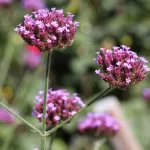Signs of Candida overgrowth include mouth lesions, persistent tiredness, and gastrointestinal disturbances. Treating the root cause can relieve symptoms and reduce the likelihood of recurrent infections.
Candida normally exists in small quantities in the mouth, intestines, and on the skin.
When kept in check, this fungus is usually harmless. But if Candida multiplies excessively, it can lead to an infection called candidiasis.
In fact, Candida ranks among the most frequent causes of fungal infections in people.
This article outlines six signs of Candida overgrowth, explores causes of candidiasis, and discusses ways to manage it.
What are the signs and symptoms of Candida?

Candida can produce various symptoms depending on the area it affects.
When candidiasis occurs in the mouth or throat, it’s known as “thrush.”
Thrush is most often seen in newborns, older adults, and people with compromised immune systems.
Poor oral hygiene or removable dentures also raise the risk.
People with oral thrush usually develop white, cottage-cheese-like patches on the tongue, inner cheeks, gums, tonsils, or throat.
These patches can be painful and may bleed a little if scraped.
Oral thrush is frequently accompanied by redness or soreness in the mouth and tongue.
In severe situations, the infection can extend to the esophagus, causing pain or trouble swallowing.
Fatigue is one of the most commonly reported symptoms linked with Candida.
Although there isn’t definitive proof that Candida directly causes fatigue, there are ways it may contribute.
First, candidiasis often co-occurs with nutritional shortfalls, such as low vitamin B6, essential fatty acids, and magnesium.
Notably, magnesium deficiency has been connected with feelings of tiredness.
Second, Candida infections tend to arise when the immune system is weakened.
A poorly functioning immune system alone can leave you feeling exhausted and run down.
An older study from 1995 proposed that persistent gut candidiasis could potentially play a role in chronic fatigue syndrome, though more research is required.
About 20% of females carry Candida in their vaginal tract.
When Candida proliferates there, it can cause vaginal candidiasis, commonly referred to as a yeast infection.
It’s estimated that about 1.4 million people in the United States seek medical care for a vaginal yeast infection each year.
While men can also develop genital yeast infections, this is much less frequent.
Symptoms of vaginal candidiasis include redness, swelling, intense itching, painful intercourse, and a thick, white vaginal discharge.
Although uncommon, Candida can also lead to a urinary tract infection (UTI).
Candida-associated UTIs are most often seen in older adults and people who are hospitalized or immunocompromised.
UTI symptoms include a burning sensation during urination, a frequent need to urinate, cloudy or foul-smelling urine, and discomfort or pressure in the lower abdomen.
However, bacteria such as E. coli are more typical culprits for UTIs.
If you get recurrent UTIs and suspect Candida might be responsible, discuss urine testing with your doctor to determine the cause.
The balance of “good” and “bad” microbes in your gut is vital for digestive health.
Beneficial gut bacteria aid digestion by helping break down starches, fiber, and some sugars.
If this bacterial balance shifts, digestive symptoms may follow, such as constipation, diarrhea, nausea, gas, cramps, and bloating.
Recent research links Candida overgrowth with various gastrointestinal disorders, including ulcerative colitis and Crohn’s disease.
Like the gut, skin hosts microbes that help prevent Candida from expanding excessively.
Different bacteria thrive in varied settings—temperature, moisture, and acidity all affect microbial growth.
Thus, changes to the skin’s environment can permit Candida to overgrow.
For instance, antibacterial cosmetics, soaps, and certain moisturizers can alter skin conditions and promote imbalance.
Although skin candidiasis can occur anywhere on the body, warm, moist regions such as the armpits and groin are especially vulnerable.
Itching and a visible rash are the most common signs of skin fungal infections.
While not life-threatening, skin fungal infections can be uncomfortable and distressing.
If Candida reaches the bloodstream and spreads, it can invade the joints and cause arthritis.
This most commonly happens after surgery or when a significant Candida overgrowth remains untreated for a long time.
Candida-related arthritis presents with joint pain, stiffness, and swelling, often targeting the hips and knees.
Candida can also cause bone infections (osteomyelitis), leading to localized pain and tenderness (26).
Although bone and joint infections are rare, they can be difficult to treat and typically require prescription medications (27).
How to manage Candida with nutrition
Your diet strongly influences the balance of beneficial microbes in the gut.
Foods high in sugar, refined grains, dairy, processed meats, and alcohol may encourage Candida growth.
While more studies are necessary, one trial found that people who avoided these foods during Candida treatment had better outcomes after three months.
Certain foods and substances might help guard against Candida infections, including:
- Garlic: Garlic contains antifungal compounds like allicin, which have shown activity against Candida in lab studies.
- Coconut oil: Rich in lauric acid, coconut oil has demonstrated anti-Candida effects in multiple laboratory experiments.
- Curcumin: In vitro studies suggest curcumin can inhibit or reduce Candida growth.
- Xylitol: One test-tube study indicates xylitol may have potent antimicrobial actions that could curb Candida growth.
- Aloe vera: Lab studies suggest aloe vera gel may suppress Candida growth, potentially helping prevent infection.
- Pomegranate: An animal study found compounds in pomegranate peel extract that may be effective against Candida yeasts.
- Kombucha: Kombucha tea contains tea polyphenols and acetic acid, both shown to kill Candida in laboratory studies.
- Probiotics: Probiotics such as Lactobacillus and Saccharomyces boulardii may reduce Candida growth and help protect against infections.
What are some home remedies for oral thrush?
How to manage candidiasis with medications
Treating candidiasis effectively and preventing recurrences requires addressing the underlying trigger.
A clinician may prescribe an antifungal medication, such as:
- nystatin
- clotrimazole
- amphotericin B
- miconazole
- econazole
- fluconazole
The specific medication and dose depend on the infection’s location and severity. Some infections clear with a single dose, while others may require ongoing therapy for up to six months.
Learn more hereFind resources about various Candida infections:
- Candidiasis of the skin
- Vaginal yeast infections
- What is oral thrush?
- How does thrush affect men?
Frequently asked questions about Candida
How do you clear up Candida?
A healthcare provider can prescribe antifungal drugs like nystatin or clotrimazole, available as oral or topical forms depending on the affected area and infection severity.
What kills Candida quickly?
How fast Candida clears depends on the infection’s severity and how promptly treatment begins. Some cases resolve after a single course; persistent vaginal infections may need treatment for up to six months.
Can diet improve Candida?
No single food cures Candida, but foods high in sugar, refined carbohydrates, dairy, processed meats, and alcohol can worsen it. Items that might help protect include garlic, curcumin, kombucha, and probiotics.
The bottom line
Multiple factors can promote Candida overgrowth, including certain medicines, health conditions, and lifestyle choices.
Altering your diet may support treatment of candidiasis and help ease symptoms like fatigue, joint discomfort, and digestive problems.
A healthcare provider can identify the source of infection and recommend the most appropriate treatment for your situation.


















Leave a Reply
You must be logged in to post a comment.